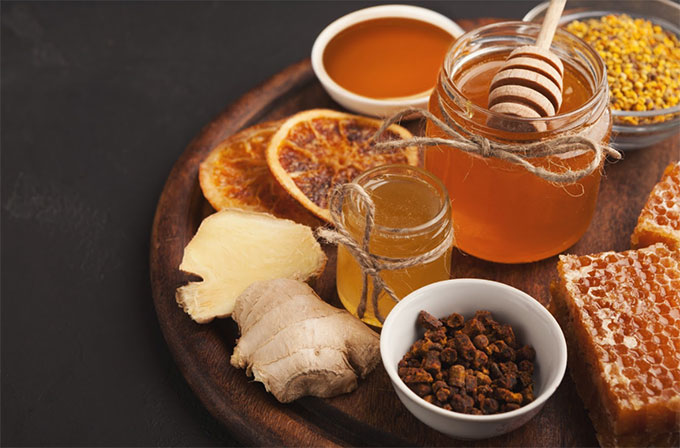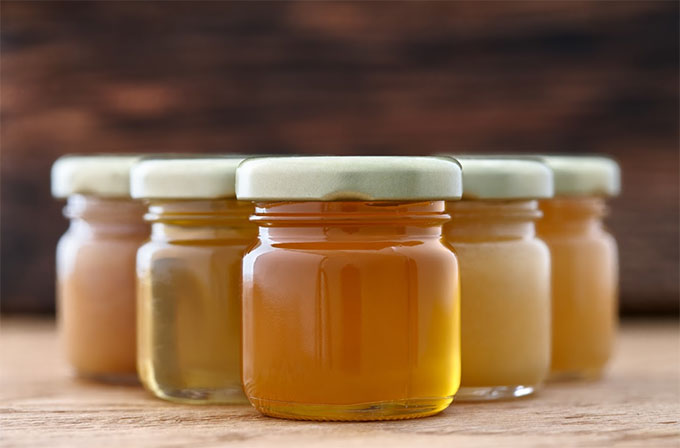
Do you believe that all honey tastes the same? Well, one can answer the question as both yes and no. If you’re mixing the honey in a warm, flavored tea, the substance’s unique taste will disappear. Yet, if you’re tasting raw honey, then you’ll be able to enjoy its exceptional flavour.
One way you can savor the varying taste of honey is to spread it on a biscuit or plain toast. Want to know more? You can continue reading this article to learn more about this sweet substance and its various types.
What Exactly is Honey?

When talking about honey, this refers to a dense golden liquid that bees extract from the nectar of blooming plants. The bees are the ones that gather the nectar and then regurgitate it after. Later on, the water dissolves the nectar to create the substance we love and consume as honey.
This golden liquid dates back as far as 2100 B.C. when it was alluded in the Hittite Code and likewise in Egypt and India’s religious writings. The term honey derives from the Old English word ‘hunig’ and later on known as honey which man now uses as ingredient and common sweetener.
In ancient times, people not only use honey in their beverages and food. They also apply the substance in producing cement, furniture gloss, varnishes, and therapeutic purposes.
What are the Available Honey Varieties?
If you want to taste the varied honey flavors, it’s best to opt for raw honey. Once honey passes through the process of pasteurization, the ingredient losses its distinct taste, and the product turns plainly sweet. You can purchase raw honey at farmer’s markets, health food shops, and specialty stores. Here are some of the diverse types of honey, you’ll find today.
Manuka Honey
One of the popular varieties of honey is the Manuka honey. This particular honey is famous for its antibacterial and medicinal elements. It comes from the tea tree bush native to the regions of Australia and New Zealand.
When taking in this particular honey, experts say it may help alleviate gastric problems, sore throats, and skin conditions. Note that some individuals feel that this honey taste very ‘medicinal.’ However, keep in mind that the product concentration will depend on the brand you’re buying from and the honey source.
Clover Honey
Meanwhile, clover honey is one of the common types available today. You’ll discover clover honey in hues of white to various shades of amber. The color depends on where the substance was sourced. This honey is originated from New Zealand and Canada.
When it comes to taste, this typical honey features a floral and subtle sweetness which makes it an ideal ingredient for salad dressings, baked goods, and light marinades.
Orange Blossom Honey
On the one hand, orange blossom honey is a native of Mexico and Spain. Though other countries such as Texas, Florida, and Southern California likewise manufacture the product. Orange blossom honey boasts a light shade, citrus flavor, and fruity aroma.
Wild Flower Honey
Another common variety is wildflower honey. When the bees take the nectar from the wildflower, it converts the taste into a more robust flavor. This particular honey features a rich and fruity taste.
Sourwood Honey
And lastly, sourwood honey that comes from the mountainous areas of Tennessee, North, and South Carolina. The sourwood trees, also known as an Appalachian lily or sour gum, generate a bunch of bell-shaped and white flowers during the summer months.
Furthermore, sourwood honey offers a zesty scent similar to cloves and cinnamon. On the other hand, its taste resembles buttery caramel and is perfect for spreading on muffins and toasts.
Takeaway
Above all, know that honey is a natural sweetener. You can blend it in practically any dish. It comes with different type such as Manuka honey, Clover honey, Orange Blossom honey, Wild Flower honey, Sourwood honey and many others. Likewise, it’s delightful when you spread it on cookies, biscuits, fruits or combine it with yogurt. Some also use it baking and cooking ingredients and an organic sweetener for drinks, and a sauce ingredient for their favorite meal.




Leave a Reply